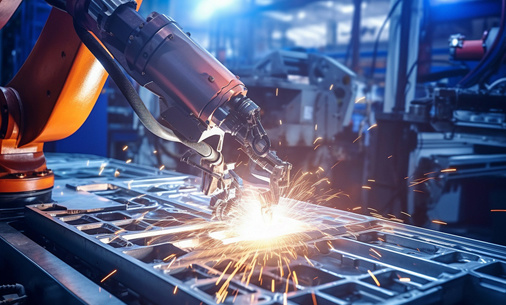Working Principle of Welding Robots
Release Time:
2023-02-25
What is the working principle of welding robots? Welding robots are automated mechanical devices used for welding operations. Understanding the working principle of welding robots during welding work can help stabilize welding quality, improve welding efficiency, and clarify the production cycle of products. Chenwei Robotics will guide you through this.
What is the working principle of a welding robot? A welding robot is an automated mechanical device used for welding operations. Understanding the working principle of welding robots helps users maintain stable welding quality, improve welding efficiency, and clarify the production cycle of products. Chenwei Robotics will guide you through this.
Working principle of welding robots:
To complete welding tasks, welding robots must rely on the support and coordination of control systems and auxiliary equipment. A complete welding robot system generally consists of a robot manipulator, positioner, controller, control system, welding sensors, central control computer, and corresponding safety equipment.
Welding robots perform welding tasks through teaching programming. Teaching programming is done step-by-step, where operators set key points of the weld seam trajectory and welding parameters in the teaching device. Welding parameters mainly include welding current, welding voltage, welding speed, wire feed speed, welding torch posture, and swing amplitude. Industrial welding robots can memorize the operator's actions and automatically generate programs for continuous execution.
After generating the program, a teaching operation must be completed first to observe whether the industrial welding robot's motion trajectory deviates. Then, a trial weld is performed. Operators adjust welding parameters based on welding quality. After teaching is completed, the industrial welding robot can perform precise welding with just a start command.
When starting the industrial welding robot, the operation process must be followed to reduce the occurrence of misoperations. If a misoperation occurs, the intelligent welding system will perform an emergency stop to provide protection.
(2) Composition structure of welding robots
Welding robots require peripheral equipment to perform welding tasks. Generally, a welding robot consists of five parts: the robot itself, which is a 6-axis articulated manipulator; the robot's central control computer cabinet, responsible for managing all information and actions executed by the robot; the welding power supply system; welding sensors; and welding tooling.
(3) Characteristics of welding robots
Welding robots are relatively easy to operate in mechanical automation. In large factory settings, they can save workers' welding time and reduce labor costs, thereby improving factory efficiency. When applied to automotive chassis welding, welding robot systems can enhance the precision of welding automotive chassis, reduce errors, and improve quality. Working on production lines, welding robots make factories more stable and reliable. Large-scale purchases of welding robots also come with after-sales maintenance guarantees, making equipment easier to repair and significantly reducing product failure rates. In factories, since the welding robot's operation area is separated from the control area, it ensures the safety of operators, allowing work to be conducted via computer.




